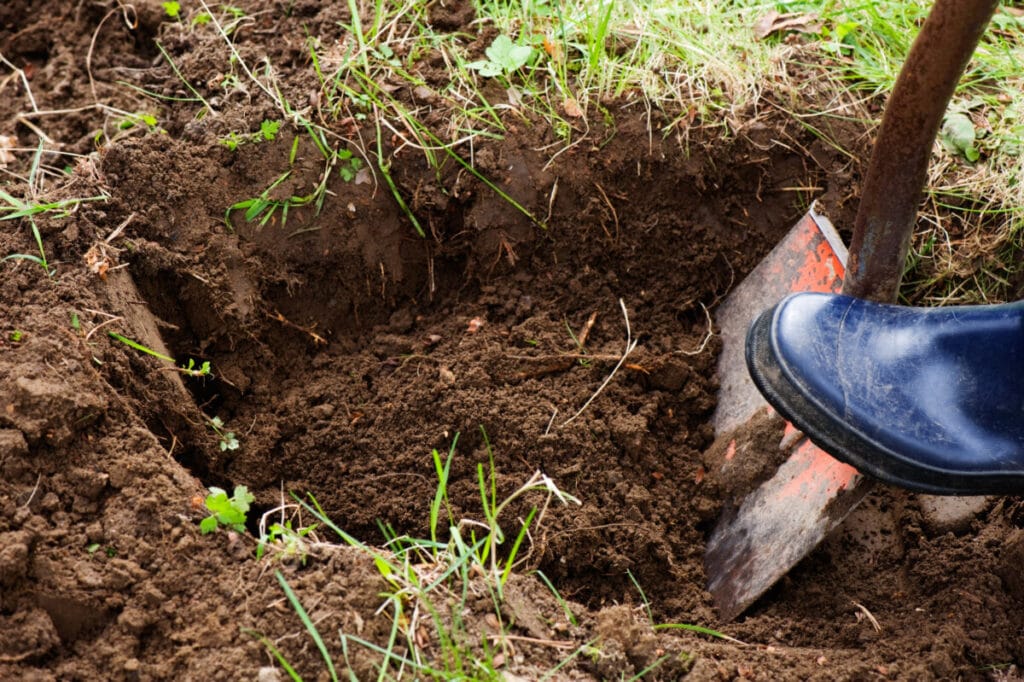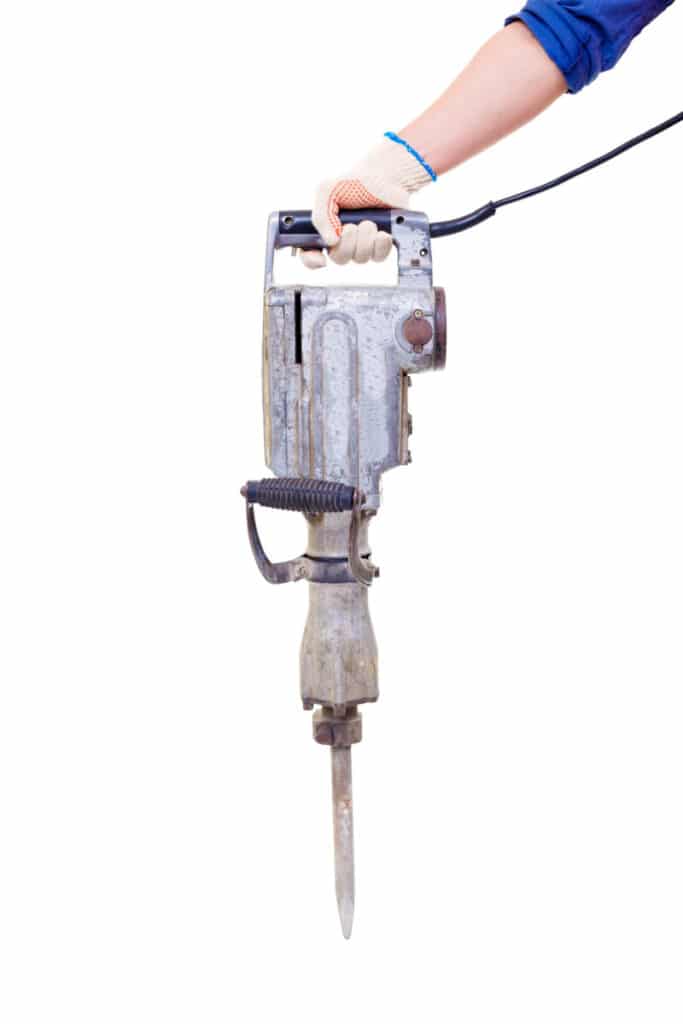
It’s good to have an idea beforehand of what to do in the unfortunate but inevitable circumstance that your beloved pet passes away. But pets can pass away unexpectedly under any circumstances, and it can be difficult to bury a pet in the wintertime when the ground is frozen. So, how can I bury my pet when the ground is frozen.
When a pet passes away during the cold winter months, it is possible to dig a hole using a jackhammer or after using a ground thawing blanket to unfreeze the ground. Many pet owners also opt to freeze their pet’s body until the weather warms up and they can dig a hole more easily.
The best option in this situation varies depending on the size of the pet, but here are some solutions to this problem as well as other options of what to do if you find that burial is not the best option.
Using a Jackhammer

Jackhammers can be really noisy, but they will get the job done if you are set on burying your pet in the winter. A jackhammer will easily break up the frozen ground and make it easier for you to dig a shallow grave. The good thing about breaking the ground with a jackhammer is that you don’t need to do much work since the equipment does the worst of it for you.
Remember to check the requirements in your city regarding pet burials, since some require you to dig at least 3 feet into the ground for health reasons. If the pet you are burying is a very small one, you will still want to bury it as deep as you can but can make the hole much smaller in diameter.
Using a Ground Thawing Blanket
Another option for you is to use a ground thawing blanket. Ground thawing blankets are specifically designed to thaw frozen ground in just hours. They are a convenient tool for professional diggers, but can also be useful to homeowners, especially those in the situation of having to find a way to bury their pets in the winter.
Ground thawing blankets have become popular in recent years due to their reliability and simplicity of use. All you have to do is leave the blanket on the ground for several hours (about 12-18 hours) before you start digging. Depending on how deep the frost is, a ground thawing blanket can thaw 10 inches in a 4-5 hour span.
Keeping Your Pet Frozen
When digging through the frozen ground cannot be done or is not the preferred action you would like to take for your pet’s burial, freezing the pet’s body is one of the most common things for a pet owner to do.
If you can’t thaw the ground or find a way to quickly dig a hole (for example, maybe there is a blizzard in your area), then the next best option is to freeze your pet. If you find yourself with no other choice and having to resort to this option, keep these tips in mind:
- You should freeze your pet within 24 hours of their death
- Remove any food from the freezer to avoid contamination, or use a separate freezer in your garage if you have one
- Wrap your pet in a towel, then place the body inside a bag and into the freezer
- Use doubled plastic bags or an airtight container to make sure your pet is sealed inside
If your pet is too big to fit in the freezer, you can place their body on a cement floor or concrete slab. This is the best way to draw heat away from the body. In this situation, you do not need to cover or wrap the body, as doing so will trap in heat and not allow the body temperature to cool.
Other Options
If you decide burying your pet in the cold winter months is too much trouble or you do not have the necessary equipment to make the process easier, here are a few other options to consider:
Cremation – Cremation is one of the most common actions for pet owners to take after their pet passes. According to pet cremation services, over ninety percent of pets are cremated and less than ten percent are buried. If you don’t have room on your property to bury your pet’s body, you might consider having their remains cremated and returned to you either for burial or in an urn or container to keep in your home. It is also common for owners to scatter their pet’s ashes rather than bury them.

Depending on your situation, cremation also might be the most affordable action after your pet passes away, especially in the case that you were considering buying a bunch of supplies you don’t already have like a ground thawing blanket in order to bury your pet. Depending on the size of your pet, cremation can cost about $30-$250.
Call the Humane Society – Another option for if you do not have ideal circumstances or a location in which to bury your pet–but also do not want to pay any disposal fees–is to take your pet to your local humane society. Most humane societies are set up to receive and dispose of animal remains, and most do not charge. You could also call your local sanitation department to see if they pick up and dispose of animal remains.

Taxidermy – Taxidermy is admittedly not the most common course of action for owners to take when their pet passes; it’s expensive and there’s a lot of pressure for the taxidermist to get things exactly right in the owner’s eyes and make the pet look a certain way.
Taxidermy can cost up to a few thousand dollars depending on the size of the pet and desired outcome, but to some pet owners the price is worth it for them to have their pet preserved in this way and the final product brings them lots of comfort. You can research taxidermy businesses near you to find exact pricing and timelines.
